#Venezia-Murano Company
Explore tagged Tumblr posts
Text
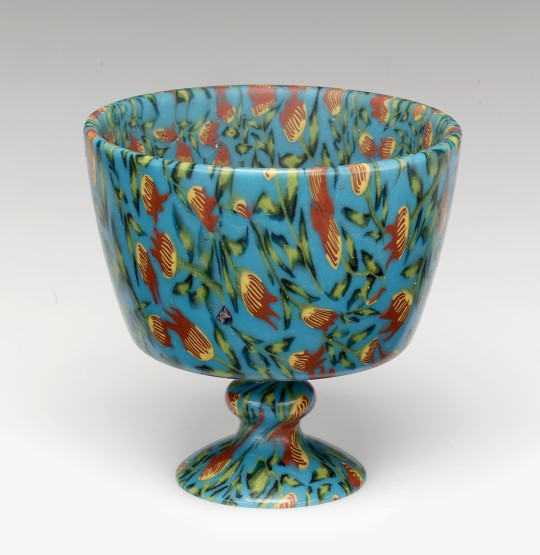
▪︎ Footed millefiori bowl.
Artist: Vincenzo Moretti (Italian, 1835–1901); Maker: Venezia-Murano Company (Italian 1872–1909)
Date: ca. 1880
Culture: Italian, Venice (Murano)
Medium: Glass
#19th century#19th century art#art#history#decorative arts#history of art#museum#Footed Millefiori bowl#Vincenzo Moretti#Venezia-Murano Company#glass#glassware#millefiori#ca. 1880
437 notes
·
View notes
Photo
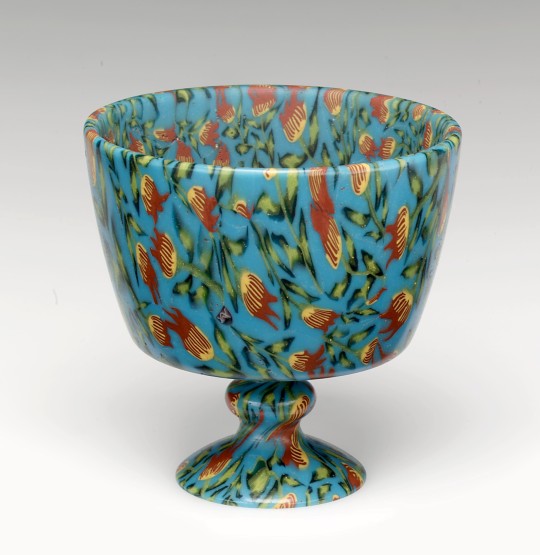
Footed millefiori bowl
Vincenzo Moretti, Venezia-Murano Company. Venice, ca. 1880
(via The Metropolitan Museum of Art)
258 notes
·
View notes
Photo
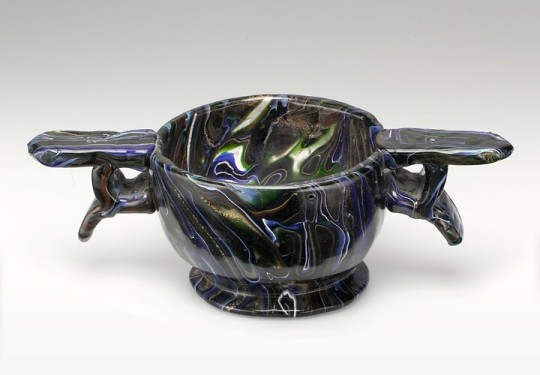
Bowl, Venezia-Murano Company, ca. 1881, Metropolitan Museum of Art: European Sculpture and Decorative Arts
Gift of James Jackson Jarves, 1881 Size: Overall (with handles): 3 7/8 × 11 3/8 in. (9.8 × 28.9 cm) Medium: Glass
https://www.metmuseum.org/art/collection/search/186202
19 notes
·
View notes
Photo

Despite all evidence to the contrary, this ISN’T a magic wand or an item straight out of a D&D campaign, thought it certainly should be. No, this is a pen. That’s right, you write with this thing. Both the body and the tip of the pen are made out of Venice’s famous Murano glass. It’s a dip pen, so you’d think it’d be inconvenient to write with, but it holds a surprising amount of ink and it writes smoothly once you get used to it. You don’t even have to go to Venice to get one! The company that produces this specific pen is called Bortoletti, and they DO ship internationally! They also sell feather quill pens, if you want to feel more like the Hogwarts kind of wizard. #dippens #pens #writing #writer #venice #italy #venezia #italia #murano #muranoglass https://www.instagram.com/p/B1XH03NH4Vr/?igshid=ah6rosb02si0
4 notes
·
View notes
Text
10 Best Romantic Hotels in Rome
New Post has been published on https://www.travelonlinetips.com/10-best-romantic-hotels-in-rome/
10 Best Romantic Hotels in Rome
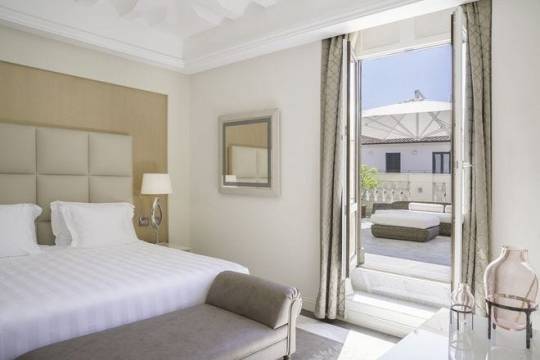
Perhaps you’re in Rome on your honeymoon. Or even with a new love. You might have chosen the eternal city to rekindle your love life or as the place for a marriage proposal. Either way, you’re coming to the right place. Love is in Rome’s DNA. Put simply, Italians love love!
Rome has a wealth of hotels with varying styles, spread across the historical center and beyond and catering to all budgets. But it can be hard to sift through the endless options and if you’re traveling for love, you’re bound to want something special. So we’ve rounded up 10 of the best when it comes to style, comfort, luxury and of course – romance.
If you want to impress, the Hotel Hassler is one of Rome’s classic and historic or try the new Rocco Forte property, the Hotel de la Ville. For contemporary design or a boutique space, look no further than Corso 281 Luxury Suites right on Rome’s main drag or the Hotel Palazzo Dama. To relive the days gone by of la dolce vita, perhaps Via Veneto is more up your alley. The Westin Palace located in a prized location. If you lovers don’t want to lift a finger, the St Regis even has a 24 hour butler service.
Take your pick, enjoy each others’ company and pamper your loved one with a relaxing stay at one of these romantic hotels in Rome – you won’t regret it.

Photo courtesy of Aleph Rome Hotel, Curio Collection by Hilton
For hedonistic pleasure, the nouveau riche choose to stay at the smart and sassy Aleph Hotel. Its interior was purposely designed to represent Dante’s Divine Comedy. The lobby and lounge areas are meant to represent Inferno with its rich red and black accented chairs, couches and decor. Guests are immediately greeted by caged marble lion statues and two gigantic samurai warriors at the entrance of the hotel. The hotel rooms itself are slightly less shocking, decorated in a clean contemporary style with large photographs of Rome hanging on the walls. Make your way up to Pardiso and enjoy a drink from the hotel’s rooftop Angelo bar or treat yourself with a day of relaxation at the Anmo Tuina spa. BUS: 80, 53, 52. METRO: Barberini.
Recommended for Romantic Hotels because: The Aleph is a stunning unique design hotel and super centrally located.
Read more about Aleph Rome Hotel, Curio Collection by Hilton →
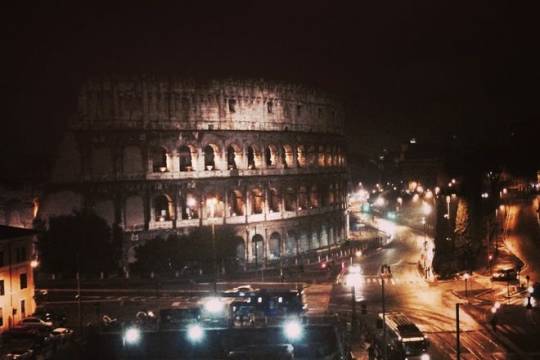
Palazzo Manfredi is a magnificent historic villa that serves today as a small boutique five-star hotel. The beauty is really in the detail at this beautiful establishment, right from its rooms and opulent suites to the spectacular rooftop view of the Colosseum. Here the Aroma restaurant serves up some of the best local produce available, while you sit and bask in the shadow of the most famous monument in the world. Still family run, nothing is too much at this hotel For a special romantic occasion, book the Colosseum Suite set across two levels with an unforgettable view. METRO: Colosseo. BUS: 87
Recommended for Romantic Hotels because: Featuring Aroma Restaurant with an unobstructed view of the Colosseum, lovers are in for a treat.
Read more about Palazzo Manfredi – Relais & Chateaux →
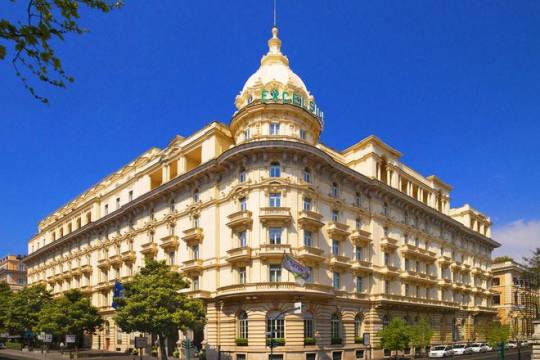
Located on a corner directly in front of the American Embassy on the famous Via Veneto, is the Westin Excelsior Hotel. Its striking presence resembles that of an elegantly baked wedding cake crowned with a magestic cupola dome on top. The interior of this hotel is downright dazzling. There are elegant mirrors, fresh flower arrangements and crystal chandeliers present throughout the hotel. It’s no wonder, this hotel is the obvious choice for promininent political figures, celebrities and royalty. Amenities include an indoor pool, full service spa, and a health club and sauna. BUS: 80, 52, 53. METRO: Barberini.
Recommended for Romantic Hotels because: The Westin is the perfect five star choice for travelers wanting to live La Dolce Vita on Via Veneto.
Read more about The Westin Excelsior, Rome →

Set within an 18th-century palazzo formerly the home to the Malaspina dynasty, the Palazzo Dama Hotel brings a touch of style and elegance to Rome like no other. A chic villa if you like, it opened its doors in 2016 and with its elaborate features (no less than a sparkling chandelier taken from the New York’s Plaza Hotel), food and beverage offering and designer appointed rooms and suites, it is the epitome of 5-star luxury. A rarity in the heart of Rome, the hotel boasts a swimming pool set in a lush garden where guests lounge about and take a dip in the warmer months with staff readily on hand to serve up a cocktail (or two). The Peruvian-Japanese inspired Pacifico Restaurant and Raspoutin Club are popular with hotel guests and locals alike. METRO: Fleming
Recommended for Romantic Hotels because: An art deco haven with quaint public spaces throughout.
Read more about Palazzo Dama (Preferred Hotels & Resorts) →

A grand palace from 1894, inviting you to explore its curated collection ouf fine art and antiques, handcrafted stucco-adorned staircase, the historic lift, the glittering Murano chandeliers and the majestic symbol of La Belle Ãpoque â” The Ritz. After a full scale renovation work the impressive lobby immediately signals grandeur and grace, as old-world splendour converges with modern style and sophistication. Light, reflectivity and refinement are the keynotes of the design scheme highlighted by a dove-grey entrance foyer and a 5-metre hand-blown glass chandelier. Fashion and art come together in a luminous Belle-Ãpoque-inspired indoor piazza that pays eloquent homage to the winter garden of César Ritz’s original hotel. METRO: Repubblica.
Recommended for Romantic Hotels because: St Regis is at the top end in Rome for opulence, service and style.
Read more about The St. Regis Rome →

The Rome Cavalieri is stituated in the Monte Mario area of Rome, just north of the city, in a prized elevate area overlooking the panorama that has inspired visitors to the eternal city for centuries. Well connected to the center, the hotel also offers a shuttle service for guests. The property sits within fifteen acres of lush Mediterranean parkland and is a calm retreat in the heart of the Rome. The hotel boasts the only restaurant in Rome with 3 Michelin stars, La Pergola as well as an award winning day spa and wellness center. More than just a 5 star hotel, it’s the first Europe to become part of the exclusive Waldorf Astoria Hotels and Resort Group.
Recommended for Romantic Hotels because: Rome’s ultimate in resort style and luxury accommodation, the Hilton also boasts the 3 Michelin star La Pergola restaurant.
Read more about Rome Cavalieri, A Waldorf Astoria Hotel →
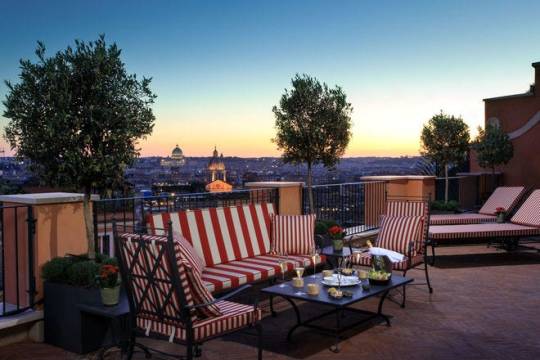
Luxury hotelier group Rocco Forte have struck again in Rome with their second five star property. Sister to the local institution that is Hotel de Russie, the new Hotel de la Ville has taken over a prized piece of real estate atop the Spanish Steps. A former 18th century palazzo with a stunning design inspired by the iconic European ‘Grand Tour’, the jewel in its crown is a large rooftop drinking and dining space that takes in sweeping views of the roman skyline. Renowned chef Fulvio Pierangelini has devised an exciting offering of food and beverage including a street-side bistro, Da Sistina with a selection of roman classics and Mosaico in the internal courtyard area with a more international and eclectic Mediterranean fusion of flavors. The Julep bar with its yellow and turquoise green decor is the perfect spot for an afternoon or evening aperitif and the outdoor area is decked with pretty red and white stripe umbrellas. Olga Polizzi and Tommaso Ziffer designed the elegant 104 rooms and suites (some with expansive terraces), filled with plush, playful and contemporary furniture and fabrics. The Sicilian-inspired De la Ville Spa offers state-of-the-art treatments and focuses on organic wellness with Irene Forte and Pietro Simone skincare.
Recommended for Romantic Hotels because: A prized location with views that span the entire Eternal City.
Read more about Hotel de la Ville Rome →
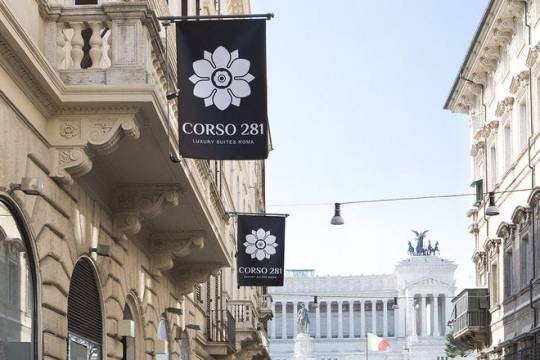
You might not expect a high-end boutique property on Rome’s main thoroughfare Via del Corso, yet Corso 281 Luxury Suites sits there grandly, stylishly and quietly, literally a stone’s throw from Piazza Venezia. In fact, it really doesn’t get much more central than this in the Eternal City. Free wifi throughout, superb designer interiors, Nespresso machines, luxurious Bulgari toiletries and breakfast in bed – this is boutique pampering at its very best. Some of the air-conditioned suites boast views of the grand Piazza Venezia and it actually doesn’t end there. It’s the service here that really makes all the difference. All the staff act as a concierge with their authentic local tips and know-how, especially the hotel director Natalino Gisonna who will guide you to the very best Rome has to offer. Smart devices are on offer for all guests to help navigate the city like a Roman. METRO: Spagna
Recommended for Romantic Hotels because: Breakfast served in the comfort of your own suite. Doesn’t get more romantic than that!
Read more about Corso 281 Luxury Suites →

The Hotel Hassler sits atop the Spanish Steps in one of the most prime positions in all of Rome. Unlike other 5-star hotels, the Hassler is a family-owned and operated hotel, which makes every aspect and detail catered to its clients unique. It is owned and personally operated by Swiss Hotelier Roberto E. Wirth. Its perfect combination of over-the-top luxury and personalized service is the reason why A-list celebrities and royalty such as Tom Cruise, Robert DeNiro and Leonardo De Caprio, Princess Diana, Prince Charles and Prince Rainier of Monaco have all stayed here. Its rooms are opulently decorated in an elegant and classic style. Nothing quite tops the lavish penthouse suite and its terrace fit for a king, boasting million dollar views. METRO: SPAGNA
Recommended for Romantic Hotels because: Hotel Hassler is 5 star luxury in one of the most prized locations in Rome.
Read more about Hassler Roma →
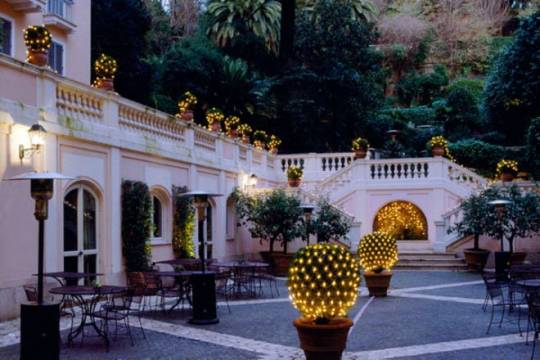
Photo courtesy of Hotel de Russie
Perfectly situated between the grandiose Piazza del Popolo and the sublime Spanish steps, lies one of the ritziest addresses in all of Rome, the Hotel de Russie. Probably the most impressive feature that this extravagant luxury hotel has to offer is its extensive terraced gardens. Most rooms boast exquisite views of the gardens. Meanwhile, the cr–me de la cr–me, the Nijinsky Suite at the top of the hotel has the largest terrace with its own private outdoor dining room, overlooking Roman rooftops and the gardens. The recently refurbed Popolo Suites and the Picasso Suite (where – you guessed it – Picasso once slept) have been recently refurbished with stunning decor touches throughout. During the summer, dining al fresco at the ‘Le Jardin de Russie’ restaurant in the middle of the hotel’s Secret Garden is just magical. METRO: Flaminio, Spagna.
Recommended for Romantic Hotels because: The pioneer in Rome’s boutique hotel scene has a cozy courtyard for all day dining.
Read more about Rocco Forte Hotel De Russie →
Source link
0 notes
Text
Venice’s new weapon to tackle overtourism
(CNN) — They’re watching you, wherever you walk. They know exactly where you pause, when you slow down and speed up, and they count you in and out of the city.
What’s more, they’re tracking your phone, so they can tell exactly how many people from your country or region are in which area, at which time.
And they’re doing it in a bid to change tourism for the better.
Welcome to Venice in a post-Covid world. The canal city may have been known as La Serenissima, or The Most Serene, during its centuries ruling the waves as the powerful Republic of Venice.
In the past few years, however, things have become rather less serene, thanks to the almost 30 million visitors who descend each year on the city of just 50,000 inhabitants.
Before Covid-19 struck, tourists were arriving in often unmanageable numbers, choking the main streets and filling up the waterbuses. Authorities had tried various measures, from introducing separate residents’ lines at major vaporetto (waterbus) stops to bringing in turnstiles that would filter locals from tourists on busy days. A planned “entrance tax,” due to debut in 2020, has been postponed to January 2022, due to the pandemic.
But as well as controlling footfall, the authorities wanted to track tourism itself — not just by registering overnight guests but, in a city where the vast majority of visitors are daytrippers, by counting exactly who is in the city — and where they go.
Enter the Venice Control Room.
A state-of-the-art ‘control tower’

The control room logs everything from water levels to the main routes people are taking around the city.
Julia Buckley
On the island of Tronchetto, next to the two-mile bridge separating Venice from the Italian mainland, the Control Room opened in September 2020. A former warehouse that had been abandoned since the 1960s, it’s part of a new headquarters for the city’s police and government — a self-described “control tower” for the city.
The building has offices for the mayor, other dignitaries, and a large CCTV room, with cameras feeding in images from around the city, watched over by the police.
So far so normal. But then, across the corridor, there’s the Smart Control Room — another bank of screens with images and information coming live from around the lagoon. They’re not being monitored for crime, though; they’re feeding information to the authorities that will create a profile of the hordes of people visiting Venice. The hope is that gathering the information will not only track footfall now, enabling the authorities to activate turnstiles and start charging for entrance on busy days. Eventually, they hope that the data will help create a more sustainable tourism plan for the future.
How to track tourism

A simulation of the main thoroughfares taken around the city.
Julia Buckley
“This is the brain of the city,” says Marco Bettini, co-director general of Venis, the Venice-based multimedia and tech company which built the system.
“We know in real time how many people are in each part [of the city], and which countries they’re from.”
He clicks on the video feed from the Grand Canal — the “freeway” of Venice, as he calls it — to look at the traffic.
“There’s huge traffic pressure here,” he says. Public waterbuses, boats delivering goods, taxis, residents zipping up the “road” in their own, private boats, and, of course, those famous gondolas — they’re all jostling for space on the Grand Canal. With no designated lanes, it can be a free-for-all.
But the new system not only records what’s going on; it analyzes the traffic, recognizing the different types of boats, from gondola to a “topo” — essentially a water-truck. It then stores the numbers. And it even tallies with the public transportation timetables, logging if a waterbus is late and, if so, by how many minutes.
Workers can also activate a “time machine” to look back — so far today, for example, there have been more than 1,000 boats passing under the main bridge at Piazzale Roma, the main entry point to the city.
It’s the pedestrian numbers, however, that are of more interest to the authorities looking at tourism patterns. The system not only counts visitors in the vicinity of cameras posted around the city, but it also, in conjunction with TIM (Telecom Italia, Italy’s largest telecommunications provider), crunches who they are and where they come from.
On this winter day, before the Veneto region entered another semi-lockdown, for example, so far, 13,628 people have entered Venice, and 8,548 have left. In the hour after 7am, 1,688 people arrived at Piazzale Roma (the gateway to the city by road and tram) — the commuters.
At 10am, the arrivals reached a peak of 2,411: most likely the daytrippers.
Tracking visitors by country and area

The authorities hope that tracking visitors will help them understand better the flow of tourists.
Julia Buckley
The authorities can see where these new arrivals are from by analyzing their phone data (the information is all aggregated automatically, so no personal details can be gleaned).
There are 97 people in the area around St Mark’s Square on this Saturday afternoon, according to Bettini — of which only 24 are not Italian.
And so far today there have been 955 people in the area, 428 of whom have come from abroad. Of the 527 Italians, only 246 are resident in Venice (if a mobile phone is regularly logged in the city, it is counted as a resident).
“As you can see, the number of daytrippers — is steep,” says Bettini. This is crucial information, because these “hit-and-run” tourists are usually charged with causing the most damage to the struggling city. They tend to come in from other parts of Italy — often from beach resorts on a bad weather day — and rarely spend money, bringing their own food and eating illicit picnics on bridges and on waterfronts. But since they don’t stay overnight, they cannot be counted by the authorities — until now.
Counting the daytrippers and tracking where they tend to visit, and which streets they take, could be crucial for a city which has resorted to closing its main thoroughfares to non-locals at busy times in an attempt to spread people throughout the city.
As Valeria Duflot, co-founder of Venezia Autentica an online social enterprise working on sustainable tourism, says: “The problem is not that Venice has too many visitors. The problem is that all the visitors go to the same two places: St Mark’s Square and the Rialto Bridge.”
Where are you from?

Working with a telephone operator, authorities can trace where those currently in the city are from.
Julia Buckley
Italians are logged by the region they live in. Of the foreigners, the system breaks down where they come from (data is based on where their mobile phone is registered, so most likely their country of origin), and displays them as bars on a map on the city — a graphic representation of overcrowding in real time, with colors going from white to red as the numbers get higher.
Today, 36% of foreign visitors are German, followed by the Swiss (16%) and British (13% — this visit took place before the new UK variant saw British travelers banned from Italy). Just 1.312% of visitors are from the United States — although, given that American travelers are still banned from the European Union, it’s a surprise it’s even that much.
And today, there have been 85,000 people logged in Venice. A much greater number, 177,000, have been in Mestre, on the mainland. On the islands — where places such as Burano and Murano are popular with tourists — there are 5,700 people, this Saturday afternoon.
There’s plenty more that the authorities are keeping tabs on: how fast people are moving in places like St Mark’s Square (start running and the machine highlights you), the tide levels throughout the lagoon (crucial for monitoring acqua alta flooding, and determining when the new Mose flood barriers should be raised).
The system took three years to build, at a cost of €3m ($3.5m). And although some might baulk at the privacy implications (although no personal data is recorded, you and your provenance is essentially being logged as you move around the city), the authorities are very proud.
“In 2021, Venice celebrates its 1,600th anniversary,” says Bettini. “And we’ll be celebrating with technology.”
from Multiple Service Listing https://ift.tt/3ibULLx
0 notes
Photo

Bowl by Venezia-Murano Company, European Sculpture and Decorative Arts
Medium: Glass, mosaic
Fletcher Fund, 1925 Metropolitan Museum of Art, New York, NY
http://www.metmuseum.org/art/collection/search/195312
1 note
·
View note
Text
A Fassi crane in Murano
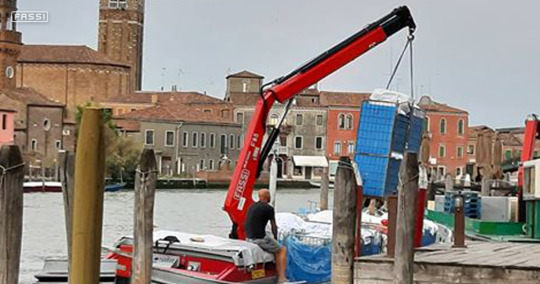

A boat belonging to the freight company Moro Trasporti works with an F85B.0.22 active hydraulic crane in the Venice lagoon
Murano (Venice) - This is not the first time that Fassi cranes have been seen at work in the lagoon. In this case, we are talking about the F85B.0.22 active model installed on the Moro Trasporti boat, which handles freight wagons on the islands around Venice and in the canals of the city. Moro Trasporti has been using this crane since 2018 on a particularly agile boat, in working conditions where speed and manoeuvrability are crucial. The operator therefore needs to be able to count on the reliability of the Fassi crane in all conditions so that he can always intervene with maximum efficiency. (Courtesy of Alessandro Venuda)

La gru F85B.0.22 ACTIVE operativa su una imbarcazione da trasporto nella laguna di Venezia
Murano (Venezia) - Non è la prima volta che nella laguna si possono notare le gru Fassi all'opera. In questo caso stiamo parlando del modello F85B.0.22 ACTIVE allestita sull'imbarcazione della ditta Moro Trasporti che si occupa della movimentazione di Carri Merce nelle isole attorno a Venezia e nei canali della città. La ditta Moro Trasporti utilizza questa gru dal 2018 su una imbarcazione particolarmante agile, in condizioni di lavoro dove rapidità e manovrabilità sono determinanti. L'operatore ha bisogno quindi di poter contare sull'affidabilità della gru Fassi in ogni condizione per poter intervenire sempre con la massima efficienza. (Per gentile concessione di Alessandro Venuda)

Un bateau appertinent a l’entreprise Moro Trasporti travaille avec une grue hydraulique F85B.0.22 active dans la lagune de Venise
Murano (Venise) - Ce n’est pas la première fois que le public a pu voir les grues Fassi au travail dans la lagune. Dans ce cas, il s’agit du modèle F85B.0.22 active aménagé sur un bateau de Moro Trasporti. Cette entreprise se charge de manutentionner des wagons de marchandises sur les îles aux alentours de Venise et dans les canaux de la ville. Depuis 2018, Moro Trasporti utilise cette grue sur un bateau particulièrement maniable, dans des conditions de travail où la vitesse et la manœuvrabilité sont des éléments cruciaux. De ce fait, l’opérateur doit pouvoir compter sur la fiabilité de la grue Fassi, en toutes circonstances, afin de toujours pouvoir intervenir avec une efficacité maximale. (Avec l’aimable autorisation d’Alessandro Venuda)

Der Kran F85B.0.22 active arbeitet auf einem Transportschiff in der venezianischen Lagune
Murano (Venedig) - Nicht zum ersten Mal konnten Fassi-Krane beim Arbeiten in der Lagune beobachtet werden. In diesem Fall ist die Rede vom Modell F85B.0.22 active, installiert auf einem Schiff von Moro Trasporti, der Güterwagen auf den Inseln rund um Venedig und in den Kanälen der Stadt transportiert. Moro Trasporti verwendet diesen Kran seit 2018 auf einem besonders wendigen Schiff unter Arbeitsbedingungen, die Geschwindigkeit und Manövrierfähigkeit zwingend notwendig machen. Aus diesem Grund muss sich der Kranführer auf die Zuverlässigkeit des Fassi-Krans unter allen Bedingungen verlassen können, sodass er stets mit maximaler Effizienz arbeiten kann. (Mit freundlicher Genehmigung von Alessandro Venuda)

Una embarcación pertinente a la empresa Moro Trasporti trabaja con una grúa hydraulique F85B.0.22 active en la laguna de Venecia
Murano (Venecia) – No es la primera vez que se ven grúas Fassi trabajando en la laguna. En este caso, hablamos del modelo F85B.0.22 active instalado en el barco Moro Trasporti, que maneja vagones de mercancías en las islas alrededor de Venecia y en los canales de la ciudad. Moro Trasporti utiliza esta grúa desde 2018 en un barco especialmente ágil, en condiciones de trabajo donde la velocidad y la maniobrabilidad son esenciales. Por ello, el operador debe poder contar con la fiabilidad de la grúa Fassi en todas las condiciones para poder intervenir siempre con la máxima eficiencia. (Cesión de Alessandro Venuda)
0 notes
Text
Venice’s future is challenged by climate change and mass tourism
(Bloomberg) –Two weeks after high tides and fierce winds produced the worst flooding in Venice in more than half a century, sirens sound about 6:30 a.m. to warn the fragile lagoon city’s weary residents that “acqua alta” is arriving again.
Less than two hours later, temporary wooden platforms are in place to allow pedestrians to move through ancient cobble-stone streets. Vendors hawking cheap water-proof boots appear out of nowhere to cater to ill-prepared tourists.
Sergio Boldrin, one of Venice’s most renowned mask makers, is used to the ritual. But the floods aren’t the only sign of decay. The feeling in the city is that climate change is hastening a downfall that started with mass tourism.
“The city has become ugly. It’s lost its soul,” said Boldrin, as thrifty day trippers stream by to gawk at but not buy his masks, which can cost as much as 1,000 euros ($1,100). “These people just don’t recognize its real beauty.”
Read: Rising sea levels could submerge key Italian ports, highways
The son of a gondolier, Boldrin is a living embodiment of Venetian tradition. From the stool of his tiny atelier Bottega dei Mascareri near the famous Rialto Bridge, the 62-year-old sees a string of small canvas-covered stands selling cheap trinkets, including low-grade plastic and ceramic knockoffs of his masks for as little as 10 euros.
The city—improbably spread across more than 100 small islands in the Venetian lagoon—attracted an estimated 30 million visitors this year. The crowds strain resources but provide little value for the local economy. Three-quarters of the tourists stay for just a few hours and spend an average 13 euros on souvenirs, according to research by Confartigianato Venezia, an association of local trade businesses.
Artisans are struggling to compete with the influx of cheaper products made abroad, and many can’t afford rents that have been driven up by real-estate speculation. Skilled craftspeople in the city’s historical area have dropped by half since the 1970s to about 1,100 in 2018.
Image courtesy: Pixabay
“A lot of it is generational change,” said Enrico Vettore of Confartigianato Venezia. “Often there’s no one in a family who can take over the business,” but there’s also the lack of demand as day trippers “don’t buy real artisan products.”
On the nearby island of Murano, Luciano Gambaro is waging a battle to preserve centuries of local glass-making traditions. The number of people working to produce the colorful, hand-blown vases and figurines has also halved, partly due to the impact of counterfeit products from eastern Europe, China and India, says the 54-year-old, who runs the family’s company and heads a consortium of business that promotes Murano glass.
The floods, which have become more frequent, disrupt the city’s rhythm, suspending Vaporetto boat lines that connect stops on the Grand Canal to outlying sites like Murano, Burano and the barrier island of Lido.
Just before midnight on Nov. 12, Venice’s “acqua alta” reached 184 centimeters (6 feet) above sea level. It was generated by a combination of rising tides and powerful winds of more than 75 miles per hour. City officials estimated the damage at about 1 billion euros. Like many others, Mayor Luigi Brugnaro blamed climate change.
Read: Tourism Is Overwhelming the World’s Top Destinations
“I love my town, we’ve raised four children here, but the city has changed for the worse in the last five years,” said Giovanni Giol, president of the Benedetto Marcello music conservatory.
Housed in a palace built in the early 1600s, manuscripts and books in the library were soaked in this month’s historic flood. The worst affected items were sent to a restoration facility in Bologna, while others were carried to higher levels of the building and are drying out on floors of the museum alongside 17th century musical instruments.
“The storm brought home the reality of the situation,” said Jane Da Mosto, executive director of a non-profit organization trying to reverse the community’s decline by controlling tourism, including a ban on cruise ships. “Venice is close to falling off the precipice. There’s no control room.”
About 1,000 residents leave every year, and about 50,000 people now call the lagoon home. The former city-state has been governed together with its larger mainland neighbor Mestre since they were linked in 1926 by Fascist leader Benito Mussolini.
Activists like Da Mosto say the city’s issues are so unique that it needs to be separate. On Sunday, Venetians will vote on a referendum to give the community its own administrative structure, but it’s non-binding and opposed by the mayor, who has called the effort “folly” because it risks creating bureaucratic bottlenecks and discouraging investment.
That puts more focus on the fraught MOSE anti-flooding project. Embroiled in several corruption probes, the system of water gates is way over budget at 5.5 billion euros and counting, and won’t be ready until 2022—more than two decades after construction began.
And it will likely be useless in stopping rising tides, according to Nelli-Elena Vanzan Marchini, an Italian historian who has written several books on Venice.
Read: Many MENA coastal cities could be flooded if sea levels rise
Global warming has raised sea levels about 8 inches since 1880, according to Climate Central, an independent organization of scientists and journalists. The rate is accelerating and a recent report by the group predicted that high-tide lines could permanently rise above land occupied by around 150 million people by 2050, including 30 million Chinese.
That’s a bleak outlook for residents like Boldrin. Along with creating masks, the artist paints images that evoke the “Death of Venice” theme—dark, solitary figures crushed by the weight of the city’s decline.
“Many of us Venetians are tired,” he said in the studio he founded with his brother in 1984 and hopes to pass on to his daughter. “Venice is suffocating.”
–With assistance from Jerrold Colten.
The post Venice’s future is challenged by climate change and mass tourism appeared first on Businessliveme.com.
from WordPress https://ift.tt/2rJM2Ko via IFTTT
0 notes
Text
Europe’s Answer To “I Love New York”: The Official Trademark Of Venice
This summer, I was lucky enough to vacation with family and friends in Venice, Italy. Highlights included seeing the traditional city sights, riding around the canals in a gondola, seeing glass being blown on the Island of Murano, and eating wonderful food. Lowlights included knocking down a stop sign with our rental car (my brother’s driving skills have sadly not improved over the years) and getting eaten alive by bugs (a theme that runs through all of my summer vacations). We saw the winged Lion of Saint Mark everywhere, as it is the official symbol of Venice, and many tourists challenge their children to count all of the winged lions that they see as they walk through the city. In 2003, the winged lion was incorporated into the official trademark of Venice.
According to information posted on the websites of the City of Venice and its affiliate Vela, Venice was the first Italian city to couple an institutional symbol with a logo for commercial purposes and cause-related marketing. The logo consists of a depiction of the winged lion, superimposed over a V, with the word Venezia (Italian for Venice) optionally running up the right side. At the time that the logo was being designed, the Mayor of Venice told a reporter from the Japan Times that some 2,000 companies use the “I Love New York” logo, resulting in millions of dollars each year in royalties, and that he believes that Venice is the first city in Europe to take this approach. For an interesting history of the iconic “I Love New York” logo, see our prior blog post here.
The Venice trademark was created for the twofold purpose of presenting a consistent image of the city in the global market and generating revenue, with part of the proceeds to be invested in programs for the socio-economic revitalization of the city. To aid in its licensing efforts, the city published a snazzy trademark usage manual providing numerous examples of permitted and non-permitted images.
The Venice trademark has been registered in Italy and dozens of other countries around the world, although I note that the trademark filings in the United States have lapsed. This is presumably because the Venice trademark is not actually being used in US commerce – unlike many other countries, the US does not allow applicants to warehouse marks, and foreign marks must eventually be used in US commerce in order to maintain their registered status.
So, is the Venice trademark a smashing success and raking in the revenue on the scale of “I Love New York,” as hoped? That is unclear at best. I didn’t see the Venice trademark when I was touring Venice, although in fairness I was not exactly looking for it. I did, however, expect to see the Venice trademark on the home page of the City of Venice website. But it is not there, nor does it appear on the Wikipedia page for Venice. So, one might be tempted to conclude that Venetians don’t love Venice as much as New Yorkers love New York, but having seen how beautiful Venice is, I don’t think that is it – I suspect they are just not that into trademarks. Plus, they need a catchy jingle.
The author would like to thank Theresa Canzoneri for her research assistance in preparing this article.
Source: http://ift.tt/2gCJ0hw
0 notes
Photo
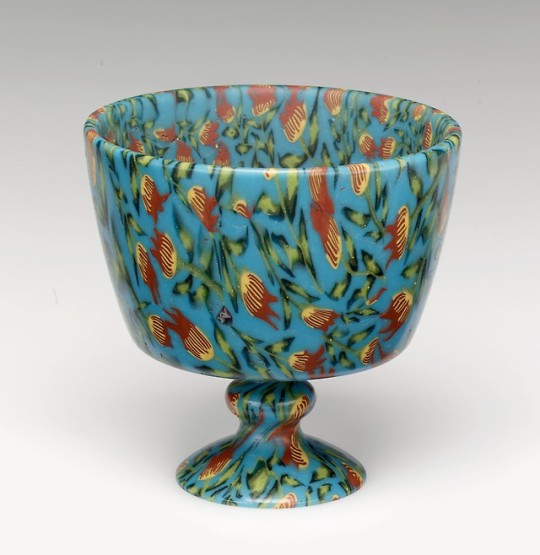
▪Cup. Factory: Venezia-Murano Company (Italian) Date: 19th century Culture: Italian, Venice (Murano) Medium: Glass
256 notes
·
View notes
Text
Final Stop: Venezia
There isn’t a lot to say about Venice, just that is turned out to be the best place to finish our trip.
We had to do laundry as soon as we got there. Fortunately the laundromat was right next door to a fantastic pizza place!

We went over to Murano which is a small group of islands where they make Murano glass. This stuff is for sale everywhere in Venice!



Giant glass sculpture.

Saint Mark’s Basilica.



We basically just spent our few days in Venice getting lost. This isn’t the kind of place to have your map out. We ate some fantastic food, did a bit of shopping and enjoyed each other’s company on the final days of our trip away. Can you believe we weren’t sick of each other after 9 and a half weeks of travelling together!
0 notes
Photo

Large murrine bowl, Venezia-Murano Company, ca. 1880, Metropolitan Museum of Art: European Sculpture and Decorative Arts
Gift of James Jackson Jarves, 1881 Size: Overall: 5 1/8 × 13 in. (13 × 33 cm) Medium: Glass
https://www.metmuseum.org/art/collection/search/186194
10 notes
·
View notes
Photo
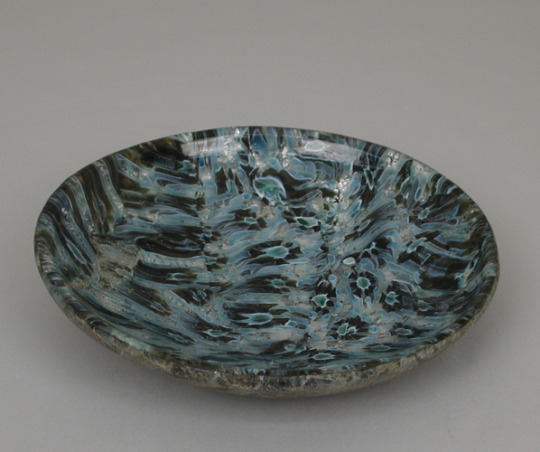
Dish, Venezia-Murano Company, ca. 1870, Metropolitan Museum of Art: European Sculpture and Decorative Arts
Gift of James Jackson Jarves, 1881 Size: Overall: 1 3/8 × 6 1/2 in. (3.5 × 16.5 cm) Medium: Glass
https://www.metmuseum.org/art/collection/search/186174
2 notes
·
View notes
Photo

Plate, Venezia-Murano Company, 19th century, Metropolitan Museum of Art: European Sculpture and Decorative Arts
Gift of James Jackson Jarves, 1881 Size: Overall: 1 1/8 × 9 1/4 in. (2.9 × 23.5 cm) Medium: Glass
https://www.metmuseum.org/art/collection/search/186199
0 notes
Photo
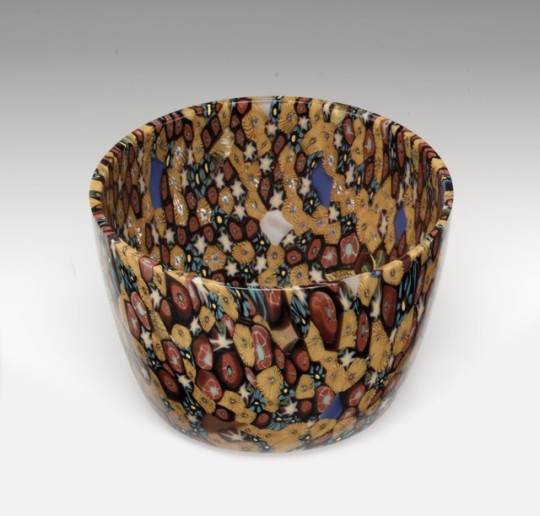
Bowl by Venezia-Murano Company, European Sculpture and Decorative Arts
Medium: Glass
Gift of James Jackson Jarves, 1881 Metropolitan Museum of Art, New York, NY
http://www.metmuseum.org/art/collection/search/186160
4 notes
·
View notes